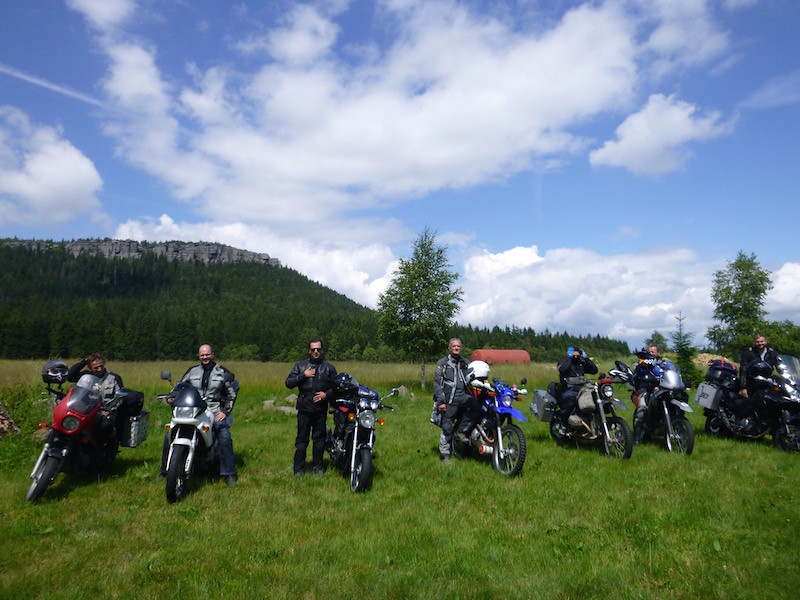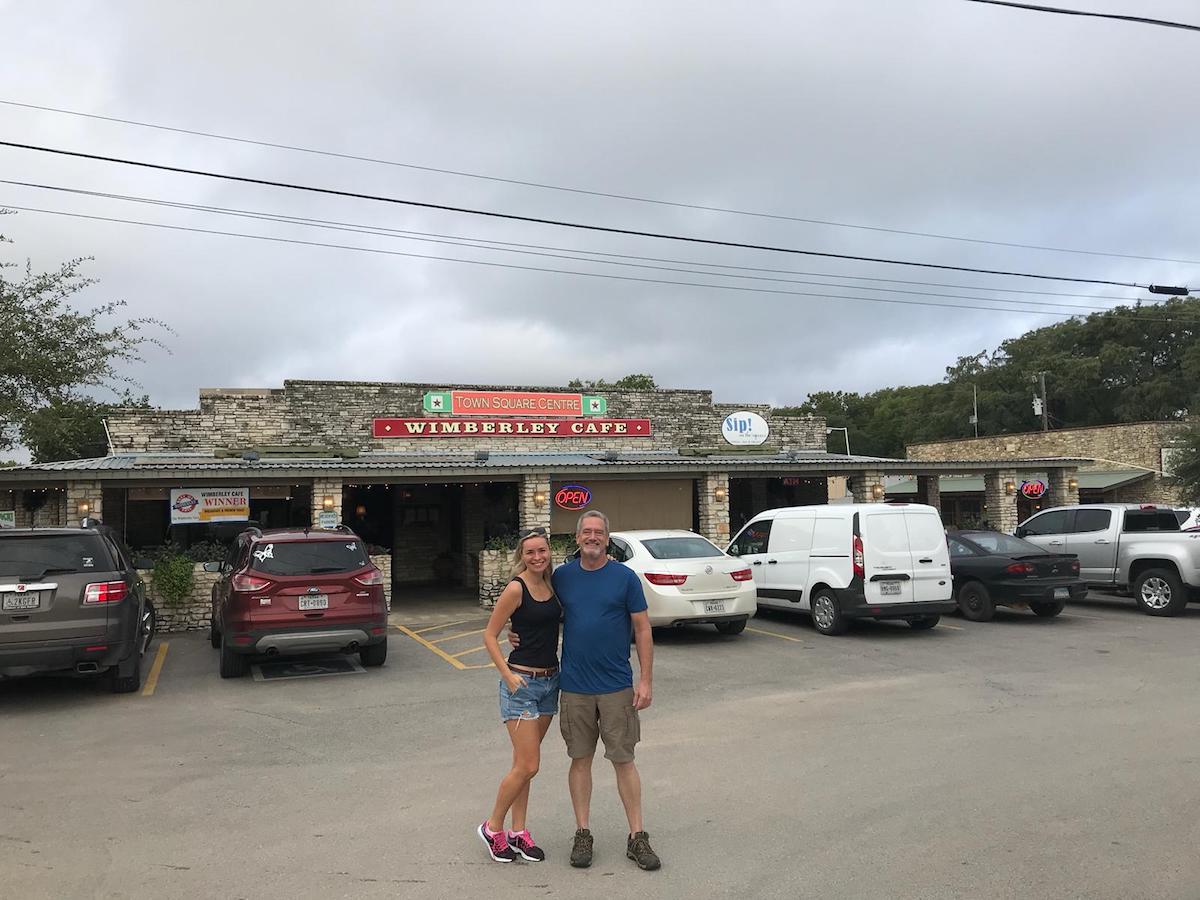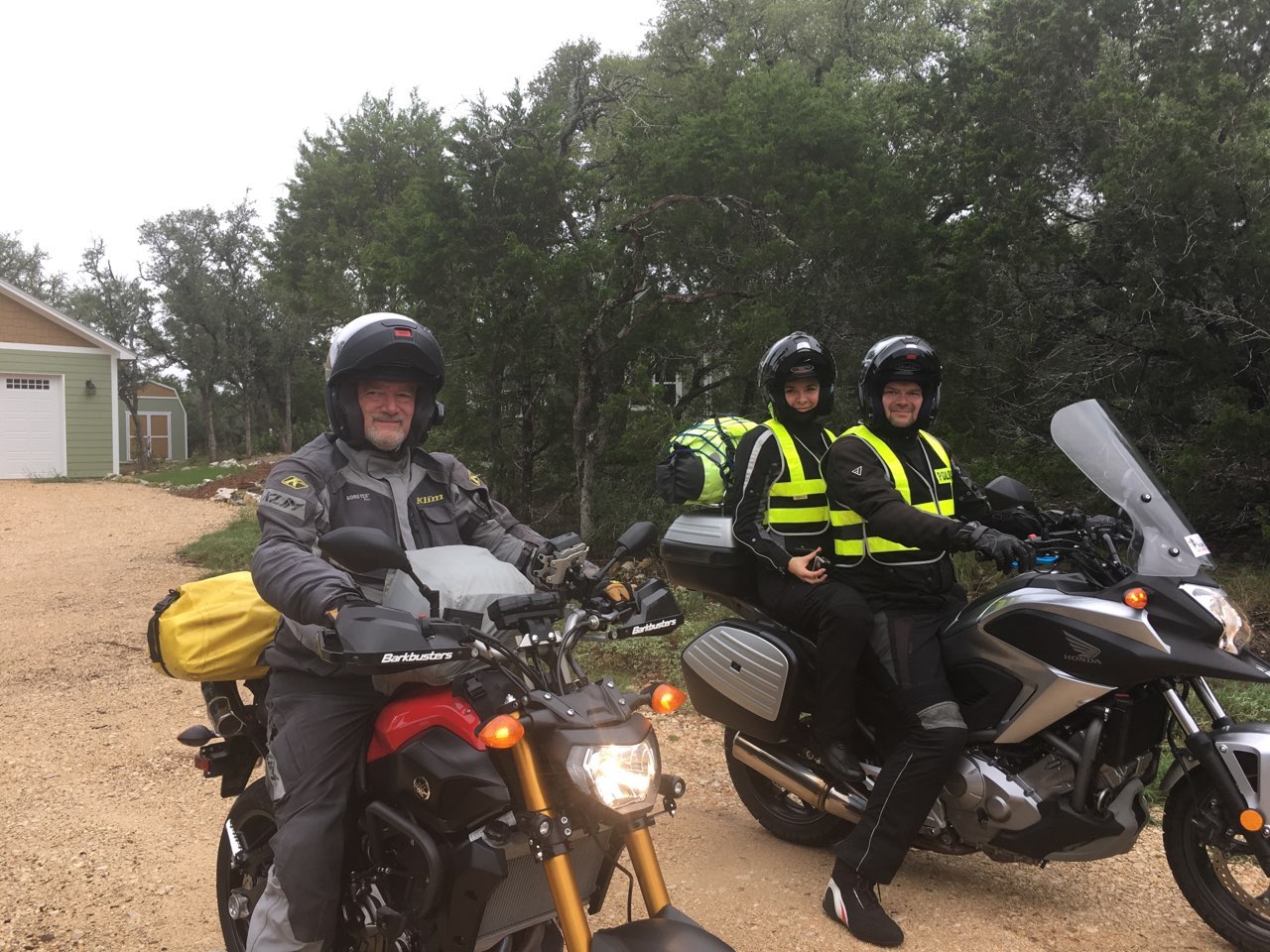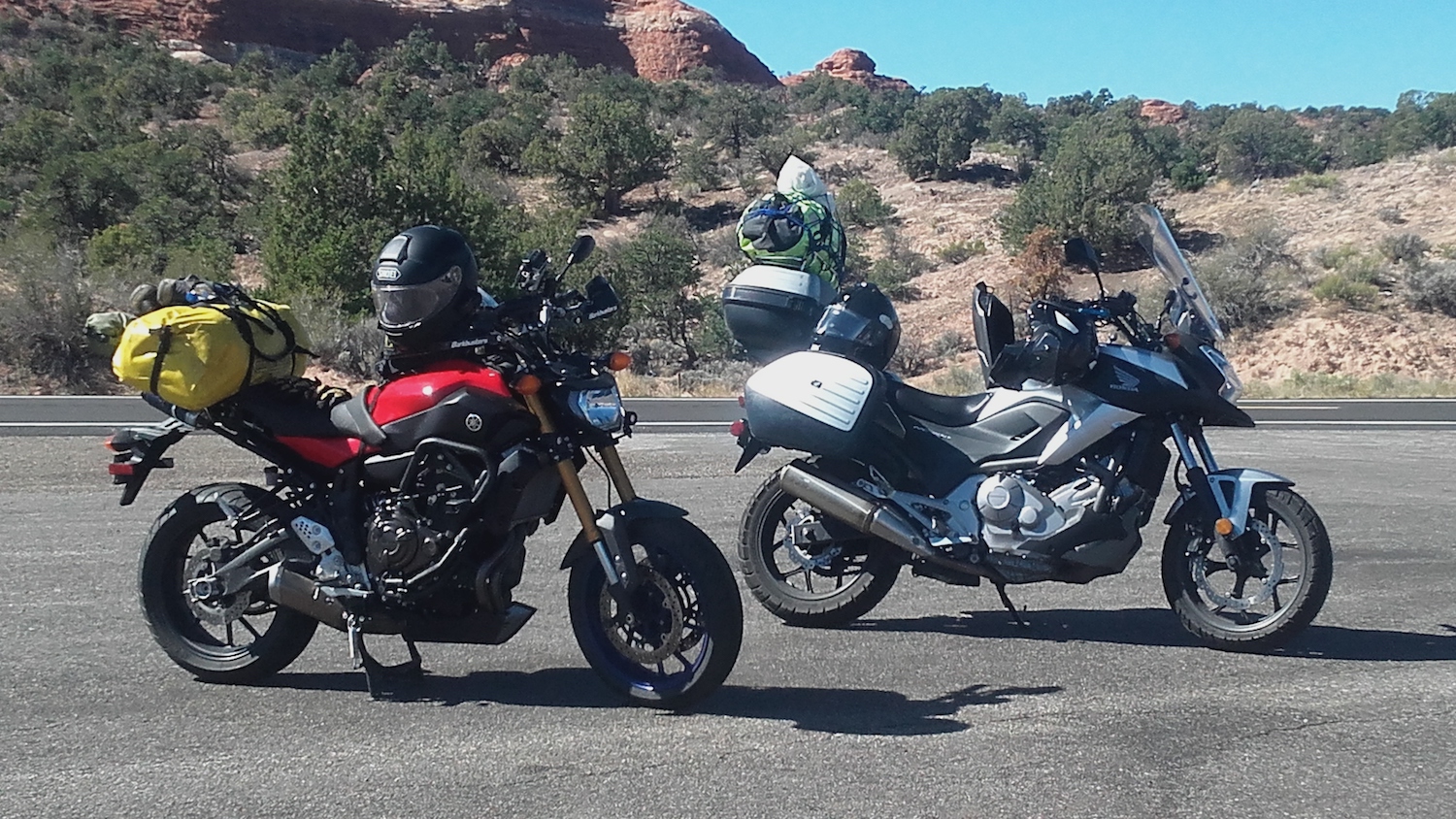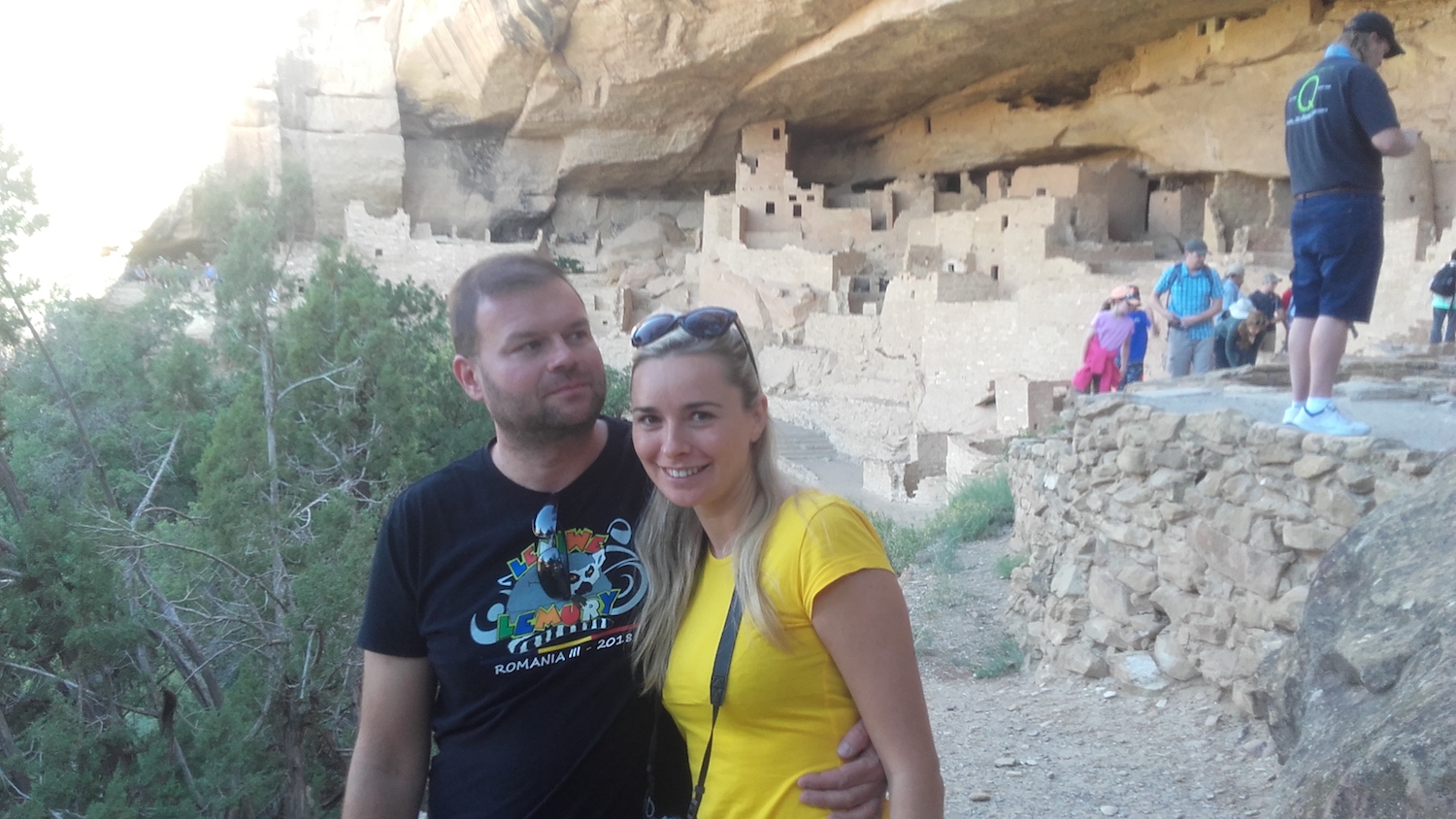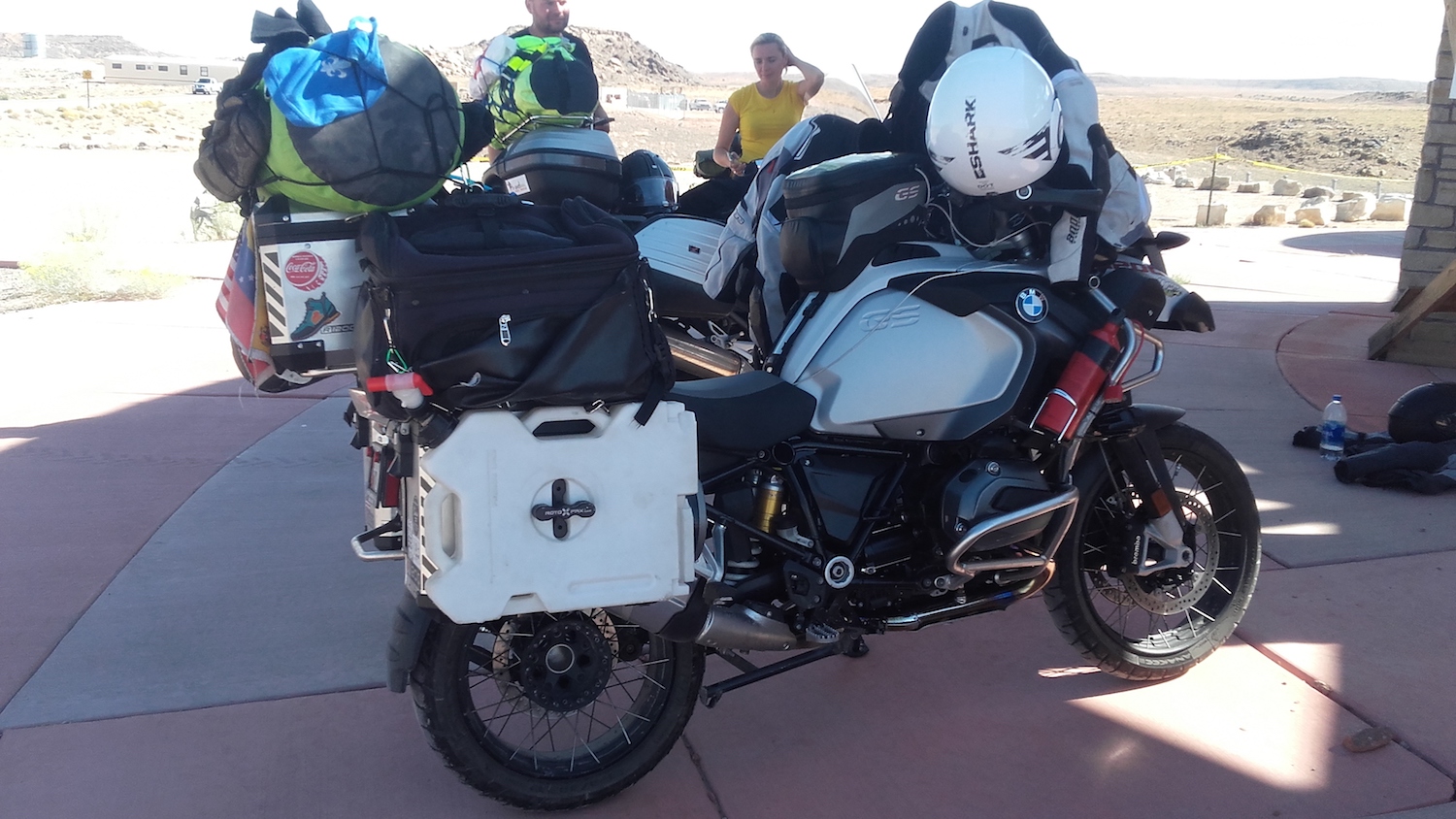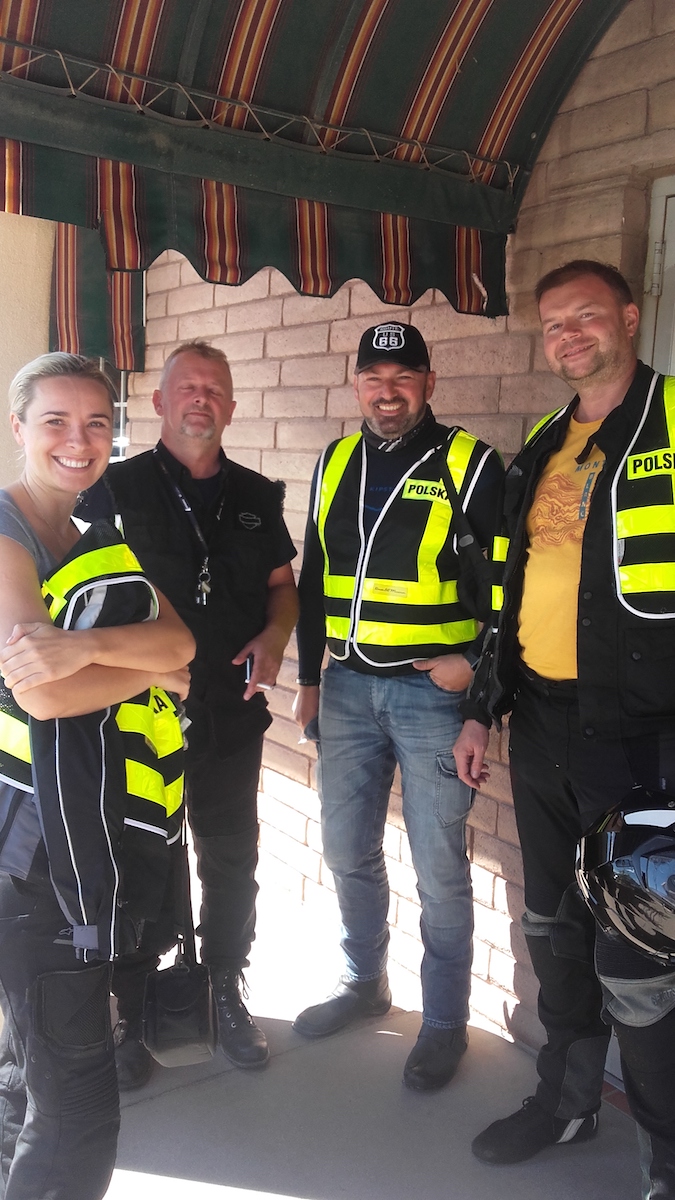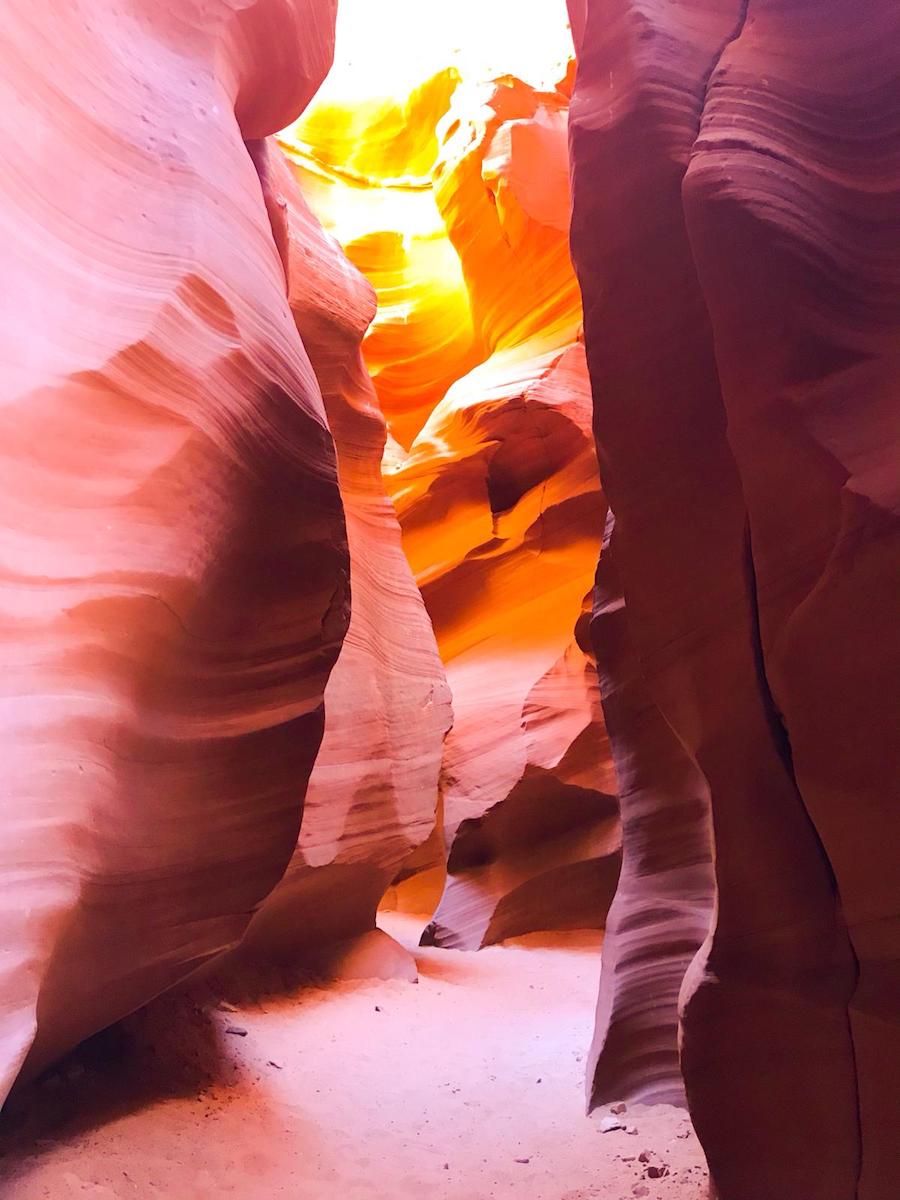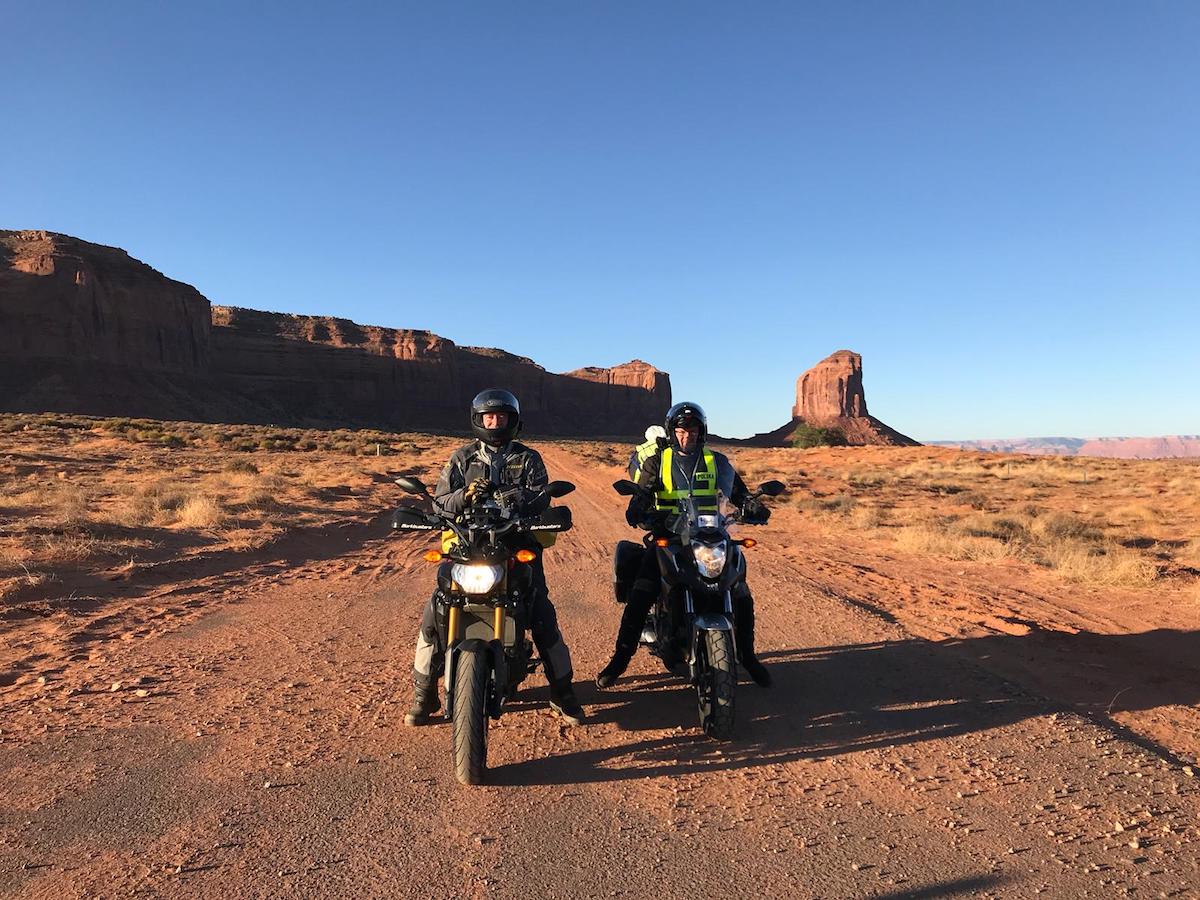November 11, 2016
A friend I met while riding in Poland asked for more info on the electronics I carried with me over the past year, so I thought I’d do a quick review of the items I took, with some additional comments.
Delorme InReach GPS tracker:  (5 / 5) We all know that electronics can let you down. They can quit working at the worst time, they can malfunction, they can not work as you thought they would, etc. This tracker is none of those. Of every electronic device I carried with me, this is the one that required NO maintenance (other than charging), no reboot, no complicated setup. And it is the one electronic device I would never leave home on a long journey through remote areas without. I had a Spot tracker before I bought the InReach. Yes, the initial cost is higher. And the monthly subscription fee is higher, if you use it as much as I did (they have several different levels of plans). But the ability to send and receive text messages via satellite from anywhere in the world makes it worth it. It links via bluetooth to your smartphone so you can compose messages on your phone with the qwerty keyboard, then send them using the InReach. No cell service necessary. And as demonstrated by the “Where Am I Now” button on the blog, the included mapping feature is very handy. You don’t have to pay for an annual subscription either: you can pay by the month, and unsubscribe anytime you’re not traveling, then turn it back on again. Great product. An unfortunate downside (in my opinion) is that Garmin recently bought Delorme. Hopefully they will realize that InReach is a superior product, and they won’t reduce it to the Garmin level.
(5 / 5) We all know that electronics can let you down. They can quit working at the worst time, they can malfunction, they can not work as you thought they would, etc. This tracker is none of those. Of every electronic device I carried with me, this is the one that required NO maintenance (other than charging), no reboot, no complicated setup. And it is the one electronic device I would never leave home on a long journey through remote areas without. I had a Spot tracker before I bought the InReach. Yes, the initial cost is higher. And the monthly subscription fee is higher, if you use it as much as I did (they have several different levels of plans). But the ability to send and receive text messages via satellite from anywhere in the world makes it worth it. It links via bluetooth to your smartphone so you can compose messages on your phone with the qwerty keyboard, then send them using the InReach. No cell service necessary. And as demonstrated by the “Where Am I Now” button on the blog, the included mapping feature is very handy. You don’t have to pay for an annual subscription either: you can pay by the month, and unsubscribe anytime you’re not traveling, then turn it back on again. Great product. An unfortunate downside (in my opinion) is that Garmin recently bought Delorme. Hopefully they will realize that InReach is a superior product, and they won’t reduce it to the Garmin level.
Panasonic Lumix DMC-TS25 Camera:  (4.5 / 5) This was my primary camera for a year on the road. I didn’t take a fancy DSLR or any professional-grade camera equipment, because, quite frankly, I wouldn’t know how to use it if I did. This little point-and-shoot camera worked very well, never failed, and was completely waterproof (it dangled from my wrist in the water as I swam through the Kanba Cave in Guatemala, tubed down the river at Semuc Champey, and swam through Canon de Somoto in Nicaragua). I have since switched to a fancier, more rugged Olympus TG-4, which has amazed me with the quality of the photos it takes.
(4.5 / 5) This was my primary camera for a year on the road. I didn’t take a fancy DSLR or any professional-grade camera equipment, because, quite frankly, I wouldn’t know how to use it if I did. This little point-and-shoot camera worked very well, never failed, and was completely waterproof (it dangled from my wrist in the water as I swam through the Kanba Cave in Guatemala, tubed down the river at Semuc Champey, and swam through Canon de Somoto in Nicaragua). I have since switched to a fancier, more rugged Olympus TG-4, which has amazed me with the quality of the photos it takes.
Samsung Galaxy S3 mobile phone:  (3.5 / 5) Ok, this is really a user-preference item and method of travel, but I’ll give a bit of my experience to help you decide what you want to do. Cell service throughout Latin America is pretty good, and free wifi is nearly everywhere. So any phone will likely work. I’ve been an Android guy for a long time, so I just took my Samsung Galaxy S3 with me when I left. It worked great all the way to Panama City, where I got caught in a torrential downpour with the phone in my jacket pocket, and it drowned. I took it apart and let it dry out for a few days, and it came back to life for about another three months, at which point I was in Argentina when it suddenly without warning decided to turn into a paperweight. Totally useless; wouldn’t power on, and I was unable to get anything out of it. I bought a similar Samsung Galaxy Prime (low end, minimal storage capacity) in Argentina, and am still using it today.
(3.5 / 5) Ok, this is really a user-preference item and method of travel, but I’ll give a bit of my experience to help you decide what you want to do. Cell service throughout Latin America is pretty good, and free wifi is nearly everywhere. So any phone will likely work. I’ve been an Android guy for a long time, so I just took my Samsung Galaxy S3 with me when I left. It worked great all the way to Panama City, where I got caught in a torrential downpour with the phone in my jacket pocket, and it drowned. I took it apart and let it dry out for a few days, and it came back to life for about another three months, at which point I was in Argentina when it suddenly without warning decided to turn into a paperweight. Totally useless; wouldn’t power on, and I was unable to get anything out of it. I bought a similar Samsung Galaxy Prime (low end, minimal storage capacity) in Argentina, and am still using it today.
My phone acted as a multiple backup plan: backup internet access for research; backup camera for if my primary camera battery was dead or SD card was full; backup gps and map program for when my GPS was either malfunctioning or lying smashed on the floor of a motorcycle shop in Southern Chile; backup keyboard to text via the InReach in remote locations; and oh yes, it worked as a phone as well, although I almost never used it as a phone. Oh, I did use it to play my music through my headset also. Which reminds me: important note: Pandora doesn’t work outside the US, so download music to your phone, or try Spotify.
Keep in mind that the ability to buy and use local SIM cards may influence which phone you decide to take. And be sure your phone is “unlocked” so you can use other SIMs.
T-Mobile cellular plan:  (3.8 / 5) There are multiple ways to stay connected while traveling in foreign countries. Many people buy a SIM card when they enter a new country, which allows them to use their phone with a local number while they are there. It’s cheap, quick, and easy, and you can buy additional minutes or data if you need it. Others, like me, use an international plan. Not all international plans are equal, so shop around. When I left home in July 2015, I signed up with T-Mobile on their international plan, which gave me unlimited text and data on their partner networks (they have a coverage map on their website if you search hard enough), and phone calls at twenty cents a minute, for about $60 a month. It worked in nearly every country in Latin America, but only in four countries in Africa. I could have just as easily left home with my Android phone and no plan, since free wifi is nearly everywhere, and used Skype or WhatsApp if I needed to call someone.
(3.8 / 5) There are multiple ways to stay connected while traveling in foreign countries. Many people buy a SIM card when they enter a new country, which allows them to use their phone with a local number while they are there. It’s cheap, quick, and easy, and you can buy additional minutes or data if you need it. Others, like me, use an international plan. Not all international plans are equal, so shop around. When I left home in July 2015, I signed up with T-Mobile on their international plan, which gave me unlimited text and data on their partner networks (they have a coverage map on their website if you search hard enough), and phone calls at twenty cents a minute, for about $60 a month. It worked in nearly every country in Latin America, but only in four countries in Africa. I could have just as easily left home with my Android phone and no plan, since free wifi is nearly everywhere, and used Skype or WhatsApp if I needed to call someone.
Garmin Zumo GPS:  (3.5 / 5) I started my trip with a well-used Garmin Zumo that I purchased used from a friend and had used for a year on my Super Tenere. It worked well enough, but after about four months, it began to freeze up. At first, the only way I could get it to reboot was to take the battery out of it, which required a #3 allen wrench. Eventually, I figured out that you can hold the power button and the top left (I think) button down at the same time, and it will reset. The Zumo is waterproof, intended for motorcycle use, and a bit outdated compared to new, more “adventure”-based GPS units. (See below for more details on maps).
(3.5 / 5) I started my trip with a well-used Garmin Zumo that I purchased used from a friend and had used for a year on my Super Tenere. It worked well enough, but after about four months, it began to freeze up. At first, the only way I could get it to reboot was to take the battery out of it, which required a #3 allen wrench. Eventually, I figured out that you can hold the power button and the top left (I think) button down at the same time, and it will reset. The Zumo is waterproof, intended for motorcycle use, and a bit outdated compared to new, more “adventure”-based GPS units. (See below for more details on maps).
Garmin Montana 650 GPS:  (4.3 / 5) After an unfortunate incident in southern Chile where my Garmin Zumo finally met it’s end, I installed a Garmin Montana. This is a bit more rugged unit, and has a camera built into it as well. It doesn’t have a lot of the “touring” motorcycle features that the Zumo had (bluetooth connection between GPS and helmet intercom for turn-by-turn spoken directions, bluetooth link between phone, GPS, and headset, ability to store music on the GPS, etc) but you don’t really need any of that stuff. In fact, you don’t really need a stand-alone GPS if you have a good smartphone and Google maps and/0r the Maps.me app.
(4.3 / 5) After an unfortunate incident in southern Chile where my Garmin Zumo finally met it’s end, I installed a Garmin Montana. This is a bit more rugged unit, and has a camera built into it as well. It doesn’t have a lot of the “touring” motorcycle features that the Zumo had (bluetooth connection between GPS and helmet intercom for turn-by-turn spoken directions, bluetooth link between phone, GPS, and headset, ability to store music on the GPS, etc) but you don’t really need any of that stuff. In fact, you don’t really need a stand-alone GPS if you have a good smartphone and Google maps and/0r the Maps.me app.
The Montana never let me down, always worked well (except when it occasionally just shut off for no reason), and got me through three continents.
Open Street Maps for Garmin:  (4.8 / 5) If you use a Garmin GPS for international navigation, you’ve probably noticed that Garmin doesn’t sell maps for some countries, and/or the maps they do sell are sorely lacking for detail. Not only that, but why would you buy maps when you can get custom ones for free? It takes a few minutes to learn to use the request form properly, but you can get maps with great details that you can load directly onto your Garmin GPS for free from OpenStreetMaps. I did buy a set of gps maps for Africa from Tracks4Africa which had good details on the smaller roads. As I mentioned earlier, Maps.me and OsmAnd are two great apps for your smartphone that allow you to download maps when you have wifi, then use them offline.
(4.8 / 5) If you use a Garmin GPS for international navigation, you’ve probably noticed that Garmin doesn’t sell maps for some countries, and/or the maps they do sell are sorely lacking for detail. Not only that, but why would you buy maps when you can get custom ones for free? It takes a few minutes to learn to use the request form properly, but you can get maps with great details that you can load directly onto your Garmin GPS for free from OpenStreetMaps. I did buy a set of gps maps for Africa from Tracks4Africa which had good details on the smaller roads. As I mentioned earlier, Maps.me and OsmAnd are two great apps for your smartphone that allow you to download maps when you have wifi, then use them offline.
Rowe PDM60 power distribution module:  (4.8 / 5) A piece of equipment that isn’t chrome, or pretty, but extremely functional. This business-card-sized box works as a circuit breaker for up to six accessory circuits, eliminating the need to have fuses all over your bike. It’s programmable for different circuit capacities (total capacity is 60 amps), and also can be set to delay powering up your accessories for several seconds after turning the key on, which allows all of the battery power to be used to start the bike first. If something trips a breaker, simply turn the key off and back on to reset the PDM60. Completely waterproof and easy to install. I have one on each of my bikes now.
(4.8 / 5) A piece of equipment that isn’t chrome, or pretty, but extremely functional. This business-card-sized box works as a circuit breaker for up to six accessory circuits, eliminating the need to have fuses all over your bike. It’s programmable for different circuit capacities (total capacity is 60 amps), and also can be set to delay powering up your accessories for several seconds after turning the key on, which allows all of the battery power to be used to start the bike first. If something trips a breaker, simply turn the key off and back on to reset the PDM60. Completely waterproof and easy to install. I have one on each of my bikes now.
Powerlet 12v outlets:  (4 / 5) These are a great way to add 12v power outlets to the bike. I put one on the front of the bike that I then connected to my tank bag so I could charge my iPad and phone inside the tank bag. On the big bike, I have one at the front for the tank bag, and another below the seat, which I can use to power heated riding gear, or a passenger can use it for the same, or to charge a phone. These have the “BMW” type socket and plug, allowing for a tighter connection that just a cigarette-lighter type of plug. I never had a problem with the socket, but I did have a couple of the plugs fail.
(4 / 5) These are a great way to add 12v power outlets to the bike. I put one on the front of the bike that I then connected to my tank bag so I could charge my iPad and phone inside the tank bag. On the big bike, I have one at the front for the tank bag, and another below the seat, which I can use to power heated riding gear, or a passenger can use it for the same, or to charge a phone. These have the “BMW” type socket and plug, allowing for a tighter connection that just a cigarette-lighter type of plug. I never had a problem with the socket, but I did have a couple of the plugs fail.
Powerlet tank bag through-put:  (4.5 / 5) This uses a SAE-type connector that allows me to have power inside my tank bag, yet quickly disconnect it for fueling or to carry the bag away. Inside the tank bag I have a dual USB connector for charging electronics.
(4.5 / 5) This uses a SAE-type connector that allows me to have power inside my tank bag, yet quickly disconnect it for fueling or to carry the bag away. Inside the tank bag I have a dual USB connector for charging electronics.
Sena SMH10 Bluetooth Headset:  (4.5 / 5) Always worked. After a year, the contacts between the headset module and the helmet mount became a bit wide, and I had to move the module around a bit to get good contact otherwise I’d lose sound in one speaker. Simple controls and easy to operate even with heavy winter gloves. The bass in the speakers isn’t great, but the newer models are better.
(4.5 / 5) Always worked. After a year, the contacts between the headset module and the helmet mount became a bit wide, and I had to move the module around a bit to get good contact otherwise I’d lose sound in one speaker. Simple controls and easy to operate even with heavy winter gloves. The bass in the speakers isn’t great, but the newer models are better.

 (5 / 5) We all know that electronics can let you down. They can quit working at the worst time, they can malfunction, they can not work as you thought they would, etc. This tracker is none of those. Of every electronic device I carried with me, this is the one that required NO maintenance (other than charging), no reboot, no complicated setup. And it is the one electronic device I would never leave home on a long journey through remote areas without. I had a Spot tracker before I bought the InReach. Yes, the initial cost is higher. And the monthly subscription fee is higher, if you use it as much as I did (they have several different levels of plans). But the ability to send and receive text messages via satellite from anywhere in the world makes it worth it. It links via bluetooth to your smartphone so you can compose messages on your phone with the qwerty keyboard, then send them using the InReach. No cell service necessary. And as demonstrated by the “Where Am I Now” button on the blog, the included mapping feature is very handy. You don’t have to pay for an annual subscription either: you can pay by the month, and unsubscribe anytime you’re not traveling, then turn it back on again. Great product. An unfortunate downside (in my opinion) is that Garmin recently bought Delorme. Hopefully they will realize that InReach is a superior product, and they won’t reduce it to the Garmin level.
(5 / 5) We all know that electronics can let you down. They can quit working at the worst time, they can malfunction, they can not work as you thought they would, etc. This tracker is none of those. Of every electronic device I carried with me, this is the one that required NO maintenance (other than charging), no reboot, no complicated setup. And it is the one electronic device I would never leave home on a long journey through remote areas without. I had a Spot tracker before I bought the InReach. Yes, the initial cost is higher. And the monthly subscription fee is higher, if you use it as much as I did (they have several different levels of plans). But the ability to send and receive text messages via satellite from anywhere in the world makes it worth it. It links via bluetooth to your smartphone so you can compose messages on your phone with the qwerty keyboard, then send them using the InReach. No cell service necessary. And as demonstrated by the “Where Am I Now” button on the blog, the included mapping feature is very handy. You don’t have to pay for an annual subscription either: you can pay by the month, and unsubscribe anytime you’re not traveling, then turn it back on again. Great product. An unfortunate downside (in my opinion) is that Garmin recently bought Delorme. Hopefully they will realize that InReach is a superior product, and they won’t reduce it to the Garmin level. (4.5 / 5) This was my primary camera for a year on the road. I didn’t take a fancy DSLR or any professional-grade camera equipment, because, quite frankly, I wouldn’t know how to use it if I did. This little point-and-shoot camera worked very well, never failed, and was completely waterproof (it dangled from my wrist in the water as I swam through the Kanba Cave in Guatemala, tubed down the river at Semuc Champey, and swam through Canon de Somoto in Nicaragua). I have since switched to a fancier, more rugged Olympus TG-4, which has amazed me with the quality of the photos it takes.
(4.5 / 5) This was my primary camera for a year on the road. I didn’t take a fancy DSLR or any professional-grade camera equipment, because, quite frankly, I wouldn’t know how to use it if I did. This little point-and-shoot camera worked very well, never failed, and was completely waterproof (it dangled from my wrist in the water as I swam through the Kanba Cave in Guatemala, tubed down the river at Semuc Champey, and swam through Canon de Somoto in Nicaragua). I have since switched to a fancier, more rugged Olympus TG-4, which has amazed me with the quality of the photos it takes. (3.5 / 5) Ok, this is really a user-preference item and method of travel, but I’ll give a bit of my experience to help you decide what you want to do. Cell service throughout Latin America is pretty good, and free wifi is nearly everywhere. So any phone will likely work. I’ve been an Android guy for a long time, so I just took my Samsung Galaxy S3 with me when I left. It worked great all the way to Panama City, where I got caught in a torrential downpour with the phone in my jacket pocket, and it drowned. I took it apart and let it dry out for a few days, and it came back to life for about another three months, at which point I was in Argentina when it suddenly without warning decided to turn into a paperweight. Totally useless; wouldn’t power on, and I was unable to get anything out of it. I bought a similar Samsung Galaxy Prime (low end, minimal storage capacity) in Argentina, and am still using it today.
(3.5 / 5) Ok, this is really a user-preference item and method of travel, but I’ll give a bit of my experience to help you decide what you want to do. Cell service throughout Latin America is pretty good, and free wifi is nearly everywhere. So any phone will likely work. I’ve been an Android guy for a long time, so I just took my Samsung Galaxy S3 with me when I left. It worked great all the way to Panama City, where I got caught in a torrential downpour with the phone in my jacket pocket, and it drowned. I took it apart and let it dry out for a few days, and it came back to life for about another three months, at which point I was in Argentina when it suddenly without warning decided to turn into a paperweight. Totally useless; wouldn’t power on, and I was unable to get anything out of it. I bought a similar Samsung Galaxy Prime (low end, minimal storage capacity) in Argentina, and am still using it today. (3.8 / 5) There are multiple ways to stay connected while traveling in foreign countries. Many people buy a SIM card when they enter a new country, which allows them to use their phone with a local number while they are there. It’s cheap, quick, and easy, and you can buy additional minutes or data if you need it. Others, like me, use an international plan. Not all international plans are equal, so shop around. When I left home in July 2015, I signed up with T-Mobile on their international plan, which gave me unlimited text and data on their partner networks (they have a coverage map on their website if you search hard enough), and phone calls at twenty cents a minute, for about $60 a month. It worked in nearly every country in Latin America, but only in four countries in Africa. I could have just as easily left home with my Android phone and no plan, since free wifi is nearly everywhere, and used Skype or WhatsApp if I needed to call someone.
(3.8 / 5) There are multiple ways to stay connected while traveling in foreign countries. Many people buy a SIM card when they enter a new country, which allows them to use their phone with a local number while they are there. It’s cheap, quick, and easy, and you can buy additional minutes or data if you need it. Others, like me, use an international plan. Not all international plans are equal, so shop around. When I left home in July 2015, I signed up with T-Mobile on their international plan, which gave me unlimited text and data on their partner networks (they have a coverage map on their website if you search hard enough), and phone calls at twenty cents a minute, for about $60 a month. It worked in nearly every country in Latin America, but only in four countries in Africa. I could have just as easily left home with my Android phone and no plan, since free wifi is nearly everywhere, and used Skype or WhatsApp if I needed to call someone. (4.3 / 5) After an unfortunate incident in southern Chile where my Garmin Zumo finally met it’s end, I installed a Garmin Montana. This is a bit more rugged unit, and has a camera built into it as well. It doesn’t have a lot of the “touring” motorcycle features that the Zumo had (bluetooth connection between GPS and helmet intercom for turn-by-turn spoken directions, bluetooth link between phone, GPS, and headset, ability to store music on the GPS, etc) but you don’t really need any of that stuff. In fact, you don’t really need a stand-alone GPS if you have a good smartphone and Google maps and/0r the Maps.me app.
(4.3 / 5) After an unfortunate incident in southern Chile where my Garmin Zumo finally met it’s end, I installed a Garmin Montana. This is a bit more rugged unit, and has a camera built into it as well. It doesn’t have a lot of the “touring” motorcycle features that the Zumo had (bluetooth connection between GPS and helmet intercom for turn-by-turn spoken directions, bluetooth link between phone, GPS, and headset, ability to store music on the GPS, etc) but you don’t really need any of that stuff. In fact, you don’t really need a stand-alone GPS if you have a good smartphone and Google maps and/0r the Maps.me app. (4.8 / 5) If you use a Garmin GPS for international navigation, you’ve probably noticed that Garmin doesn’t sell maps for some countries, and/or the maps they do sell are sorely lacking for detail. Not only that, but why would you buy maps when you can get custom ones for free? It takes a few minutes to learn to use the request form properly, but you can get maps with great details that you can load directly onto your Garmin GPS for free from
(4.8 / 5) If you use a Garmin GPS for international navigation, you’ve probably noticed that Garmin doesn’t sell maps for some countries, and/or the maps they do sell are sorely lacking for detail. Not only that, but why would you buy maps when you can get custom ones for free? It takes a few minutes to learn to use the request form properly, but you can get maps with great details that you can load directly onto your Garmin GPS for free from  (4 / 5) These are a great way to add 12v power outlets to the bike. I put one on the front of the bike that I then connected to my tank bag so I could charge my iPad and phone inside the tank bag. On the big bike, I have one at the front for the tank bag, and another below the seat, which I can use to power heated riding gear, or a passenger can use it for the same, or to charge a phone. These have the “BMW” type socket and plug, allowing for a tighter connection that just a cigarette-lighter type of plug. I never had a problem with the socket, but I did have a couple of the plugs fail.
(4 / 5) These are a great way to add 12v power outlets to the bike. I put one on the front of the bike that I then connected to my tank bag so I could charge my iPad and phone inside the tank bag. On the big bike, I have one at the front for the tank bag, and another below the seat, which I can use to power heated riding gear, or a passenger can use it for the same, or to charge a phone. These have the “BMW” type socket and plug, allowing for a tighter connection that just a cigarette-lighter type of plug. I never had a problem with the socket, but I did have a couple of the plugs fail.





